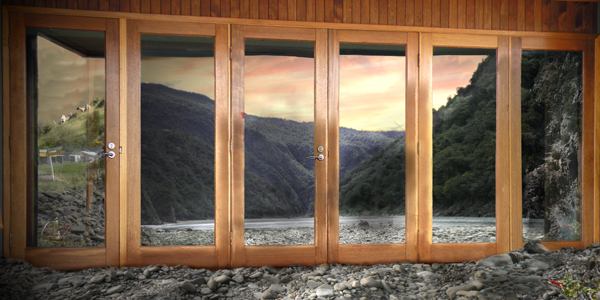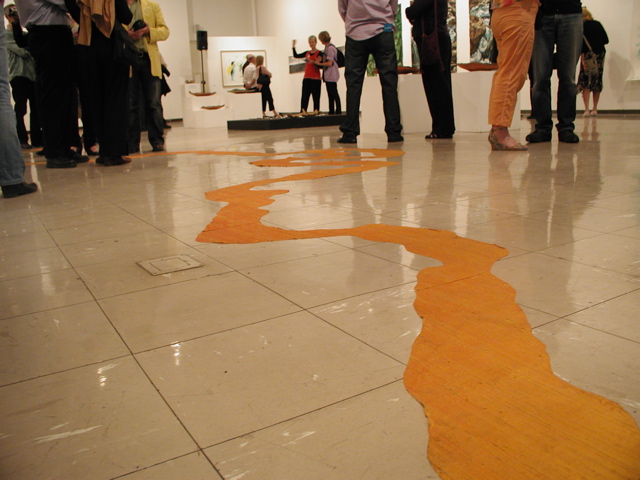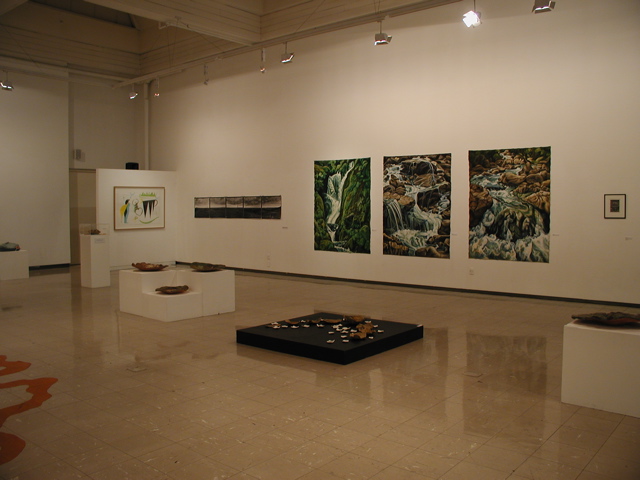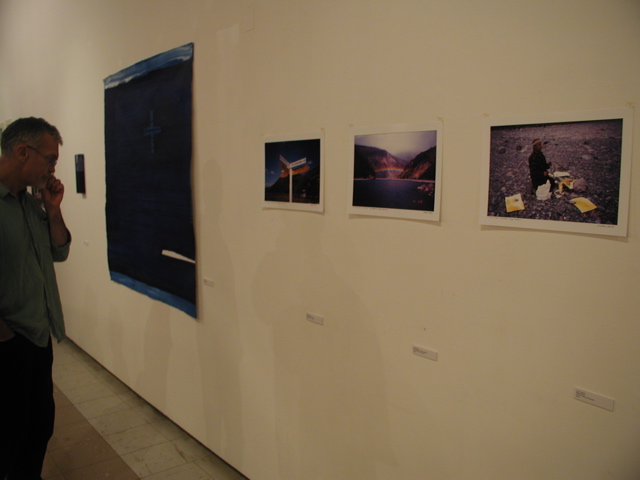He awa reo – River Talk – Artists for Save our Water
At CoCA 25th November – 12th December 2009
Reviewed by Jamie Hanton
Looking out Ramonda Te Maiharoa’s digital doors to the Waimakariri River and seeing the spectre of dairy farming beside the untouched scene undoubtedly prompts those with any interest in their land to begin re-evaluating their attitude to the precarious status of the region’s natural resources. The clear as crystal montage and the rest of the work in He awa reo gives a glimpse of a possible future and are a catalyst for questions to be asked of those in positions of power and of citizen bystanders.
‘Protest art’ carries a rather loose definition, as much for its range of media as its historically vast number of messages. Crucially, The River Talk Artists capture a number of voices and perceptions with an eclectic group show that comprises an array of disciplines. Work from Canterbury school children has also been included creating a truly representative show.
At its most successful, an exhibition of a dissenting nature can crystallise information and still remain impassioned. Better yet, they can provide a forum for voices that could potentially go unheard. The gurgling and rushing Waimakariri, while voluble, often goes unnoticed in the din of a debate. At times it needs those with oesophagi to speak for it. He awa reo amplifies the rumble of the river; with the hope that in the future the remark, “The people don’t even know it’s being given away” in Jane Zusters’ video work cannot be uttered.

Despite the range and variety of media there is a unified message and common thematic dichotomy running throughout the show, simply put, what we have now and what we will have should the Central Water Scheme go ahead. Linda James’ Waterfall series has its aesthetic roots in Van der Velden’s Otira Gorge works, as well as a geographical connection, the Waimakiriri begins its journey above the plains in the Otira Gorge. It is a sign that attitudes to the primacy and beauty of water as a vital part of Aotearoa have persisted over the course a century. Though in place of Van der Velden’s romantic darkness is joyous illumination, sun cast across the scene. Sally Hope’s small oil canvasses also revel in the light, as flecks of dusky pinks and murky khaki are reflected in the river; a kaleidoscope of perspectives. Her series presents a collection of rivers emphasising the plurality of the river, its many different things to many people. At once a place of recreation, of beauty and a habitat to all manner of creatures. Sam Mahon’s George and Irene Mura Schroder’s Threatened Mudfish make the living connection explicit. The nationally endangered Canterbury Mudfish, whose habitats have been destroyed as waterways have disappeared, becomes a tangible symbol of what may be lost if the proposed scheme goes ahead.
With irrigation comes the threat of a withering river flow; diametrically opposed is Jane Zuster’s invigorating Watertalk in which blueness and all its connotations are celebrated, a symbol of purity, hydration but also deep melancholy. Indeed, the thought of such deprivation is emotionally charged, Nigel Brown’s black singleted farmer is a portrait of conflicted sentiments as he stands in front of the land, looking away, arms folded in a practiced staunchness. Brown continues to successfully question and subvert long held symbols of kiwi-ness. The historic backbone of the New Zealand export market, farmers have in part the status of economically proclaimed guardians of the land, and potential executors of its Will. That their position in the debate is ultimately torn is spelled out in Brown’s We are water which states ‘if we abuse rivers, we abuse ourselves’ thus tying together the river’s life-giving properties and its living and thriving properties as a natural entity in and of itself. 
Emphasising this point is Ben Woollcombe’s delicate watercolour Finding her way, Waimakiriri; an illustration of the will of the river, scything gracefully through the land. Irene Mura Schroder’s ceramic works capture a glorious wetness unusual for their medium, and the direct juxtaposition of Margaret Ryley’s Fragments of a river, a porcelain and stoneware work that exudes a more familiar arid texture, is striking.
Becky Turrell’s Path of Light stretches from one end of the gallery to another, a winding ochre track of vinyl that leads to Albert McCarthy’s Guardianship (Kaitiakitanga), which, in unison with Nigel Brown’s We Are Sorry invokes the roles and responsibilities the wider community has in protecting the land. Mark Adams’ moody composite photographic work of five views across the plains shows irrigation canals, but these artificial implements are dwarfed by the magnitude of their surroundings, yet there is an uneasy sense that such slashing will continue. However, there is a suggestion in the vastness of the scene that in this conflict there is not a singular path into the future, but options.
And this is the great success of He awa reo, through the high individual standards that the participating artists set for themselves the works collectively open the debate regarding the Central Water Plains Scheme to a larger audience, provoking viewers with works of great depth and clever aesthetic contrast.

Hi,
I am very interested in the deteriorating rivers and streams in NZ.
is there a national organisation to promote a united front ?
I am interested in exploring sponsorship somewhere in this field and would certainley appreciate any help.
Best,
Mike